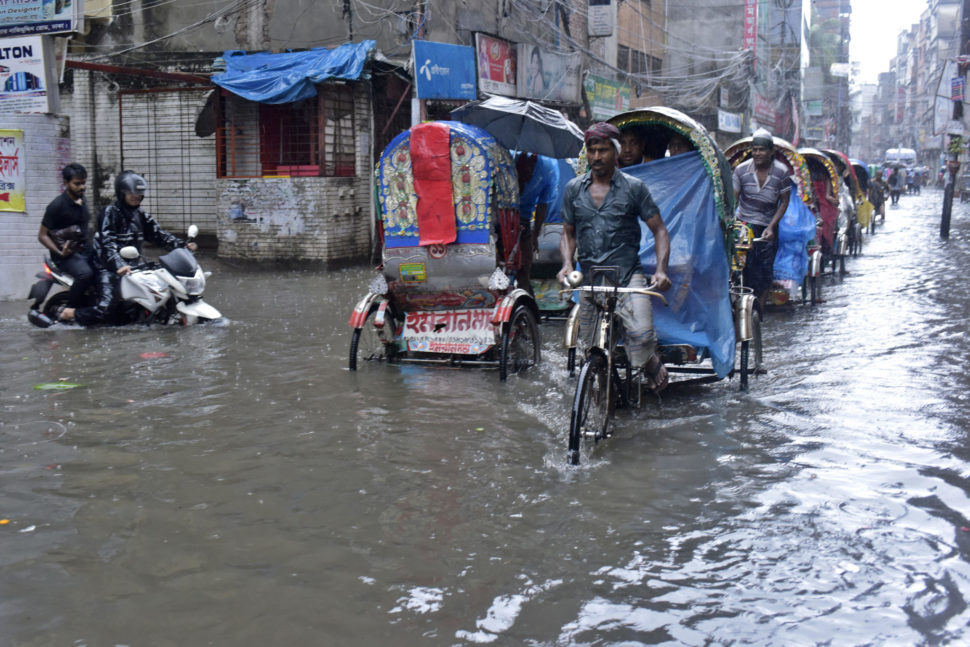Many developed countries have invested in other maturing economies over the years.
This comes as no surprise as the world moves further and further into globalization.
So why is the Netherlands investing so heavily in Bangladesh?
The Dutch Merge Finacial and Human InterestsClick To TweetThere are many avenues for individuals to invest in various industries in other countries.
Charities like Kiva allow you to reinvest dividends paid out by your original investments right from your laptop PC or desktop computer.
But investing in infrastructure on an enterprise level for millions of people?
That takes more than a few micro-loans (or a few hundred thousand). The Netherlands seeks to enhance Bangladesh’s growth by investing on a larger scale. These countries share similar challenges such as being coastal deltas and having three major rivers.

Since 1956, the dynamic duo has endeavored to improve Bangladesh’s water management in a variety of ways. Drain management, increasing land availability, coastal and river basin zone management–you name it.
Thanks to Bangladesh’s robust growth, the country plans to become a middle-income nation in the next ten years.
As a result, the Dutch and Bangladeshi governing bodies expanded the focus from strictly development to now include trade and investment. By investing in infrastructure, the Dutch bolster their own global portfolio.
This land-creation tradition has long been a part of Dutch history. If you’re a fan of Bordeaux wines, did you know that the Dutch drained much of the Bordeaux swamp in the 1600s to create additional land for planting vineyards?
One Vision; Many Plans for Bangladesh Water Infrastructure
Examining everyday processes for ways to improve is time-consuming and can overwhelm anyone quickly. In order to mitigate failures and inefficiencies, the Dutch and Bangladeshi distilled a unique four-pronged approach for one distinct vision. The “Delta Plan 2100” utilizes four key themes:
- water and food
- water, sanitation, and hygiene
- water and textile
- water management
But why the “Delta Plan?”
The name is derived from Bangladesh’s geographical location as a giant delta along a vulnerable coastal region. Due to the country’s increased economic growth, solutions for water safety, food sources, and other issues were necessary. As delineated by a document entitled “50 years of Water Cooperation”, this plan is “…an integrated and holistic long term vision. The Delta plan prepares the country for a sustainable future and at the same time optimizes short and mid-term approach.”
This holistic approach to economic growth oriented challenges is what makes the plan innovative, according to the document. Hasse Goosen of the Dutch knowledge institute Alterra says that the team uses a touch tech to turn data and measurements into actionable intelligence: “On one side you find the flood charts and on the other the charts with the data on which type of rice cultivation takes place and location and time of the harvest.”
Space Tech for Earth Based Problems
The Dutch National Air and Space Laboratory also collaborated with the Bangladeshi Center for Environmental and Geographic Information Services.
In an effort to support bilateral programs for both countries, the intent is to use satellite alert systems to aid with food, water, and climate challenges in Bangladesh. An SMS alert system will also provide another layer of warnings. The goal is to increase awareness of imminent flooding in rural communities despite the difficulty of flood predictions.
Satellites will also deliver crop and agriculture data along with weather/climate data. These metrics and insights will be used along with natural defenders: oysters and mangroves. The fight against salinization is ongoing. Part of this fight includes cleaning the canals in the capital city of Dhaka. As a result of heavy silting, the canals are less effective during flood times which adversely affect nearby neighborhoods. Using a combination of technology and methodology, the Dutch and Bangladeshi peoples hope to provide safe drinking waters for millions of people.
Growth and Innovation for a Better Tomorrow
Another goal: producing cleaner and more sustainable textiles for the Bangladeshi people. In cooperation with all of the other initiatives, the bolstered infrastructure can support Bangladesh’s future growth and augment it naturally.
Dutch governing bodies will help in the reclamation and retention of Bangladeshi lands, as well. The partnership panoplies a critical focus on knowledge exchange through the collaboration of many groups from both countries. By merging financial and human interests, the Netherlands and Bangladesh show that investing in infrastructure pays off.



















Comments (0)
Most Recent